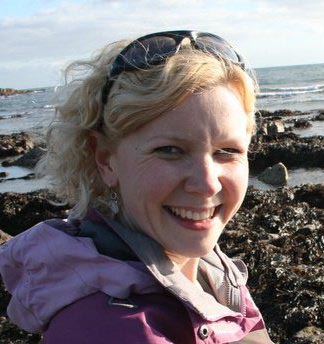
A few months ago my good friend Katie van Santen preached a sermon entitled “Connectedness”, which I thought was pretty great. The following is an adapted version of that sermon.
‘[Jesus] was delivered over to death for our sins and was raised to life for our justification.’ (Romans 4:25)
This statement from Paul might seem reasonably straight-forward at first glance. It’s a condensed version of the gospel message, right? A few words that essentially sum up what Jesus came to do. But what does it actually mean? Once you begin to dig below the surface of a verse like this, things start to look decidedly less straight-forward.
For starters, this is just one translation. Spend a little time exploring other versions and you will find that Jesus could have been… delivered up for death, given to die or handed over to death… for our sin (singular), trespasses, offences, mistakes, violations, failures, or transgressions… so we may be justified, made right, or so we could meet the requirements of righteousness, or be made acceptable, or receive God’s approval, or made to be as we ought to be. It depends who you ask.
So how can we make sense of this? What actually is sin? How should we define it? What did Jesus’ death change? What about his incarnation and life and teaching and resurrection and the giving of the Holy Spirit? And what does believing it change? What is the right state to which we are transferred, how we ought to be? What does that look like or feel like? And does it matter?
As mind-boggling as the whole thing remains, there is one way of thinking about it that still makes sense to me. I think that perhaps it’s about being connected.
Connected to God our maker, the source of all being and life and love.
Connected to the rest of creation, with whom we share the dust of which we’re made.
Connected to each other in the self-giving, interdependent community of the Kingdom of Heaven that reflects the self-giving, interdependent community of the Trinity.
And connected to ourselves – seeing, knowing and reflecting the love of God in our being.
Most of us instead tend to feel disconnected. We believe the myths of independence and self-sufficiency and separateness. And the results of this perceived disconnection are what we often call sin.
The birth of Christ as a vulnerable and dependent child named Jesus told us that to be human and to be connected are good things. The life of Jesus showed us what connection and community and interdependence looks like. The death of Jesus showed us the cost of the lie of separation and the price God was willing to pay to show us the truth of our connectedness. And the resurrection of Jesus shows us that death is not the end of connection but the beginning of a reconnection.
There have been so many ways of understanding this through the centuries; it’s not about finding the one correct understanding – just the one that helps us best live in it and live it out.
Abraham didn’t have any theology of sin, salvation or eternal life. He had an experience. Paul says that Abraham’s faith did not waver… but Genesis tells us that Abraham doubted and lied and laughed and tried his own way when there was no sign of God making it happen. But despite all of Abraham’s wavering, God was faithful and fulfilled the promise of a child and a nation.
Abraham is held up as an example of faith – being faithful to God and blessed by God because of that faith. And yet Abraham was pretty rubbish at it. I love that! I love that the model that Paul presents as an example of a life lived well with God is a life full of failings, screw-ups, stubborn self-will and second chances. It gives me such hope for my own failings, screw-ups and stubborn self-will.
Abraham had an experience, encountering and connecting with God. He lived in a promise, and I think that’s Paul’s point in describing Abraham’s faith as a case study for us.
We too can live in the promise of a hope and a future with more and better things to come. It’s not about theology or theories. It’s not about being right or even about getting to heaven. It’s not about acting in our own way to make God’s promise come about. It’s about living and loving in such a way that the interdependent, mutually self-giving, connected community of heaven is reflected here on earth.
We can live in the promise that we and our neighbours and our world may one day be connected as we ought to be.
We can live in the promise that God can use a bunch of messy, stubborn screw-ups to bring about the Kingdom here.
We can live in the promise that the impossible can be done.

Katie van Santen lives in Plymouth, UK with some lego and quite a few books. She has recently completed a Certificate of Higher Education in Theology, Ministry and Mission. Currently she is not a marine biologist or science teacher due to disability, but keeps herself busy as a volunteer aquarium host, visiting preacher, and Fairy Godmother.












